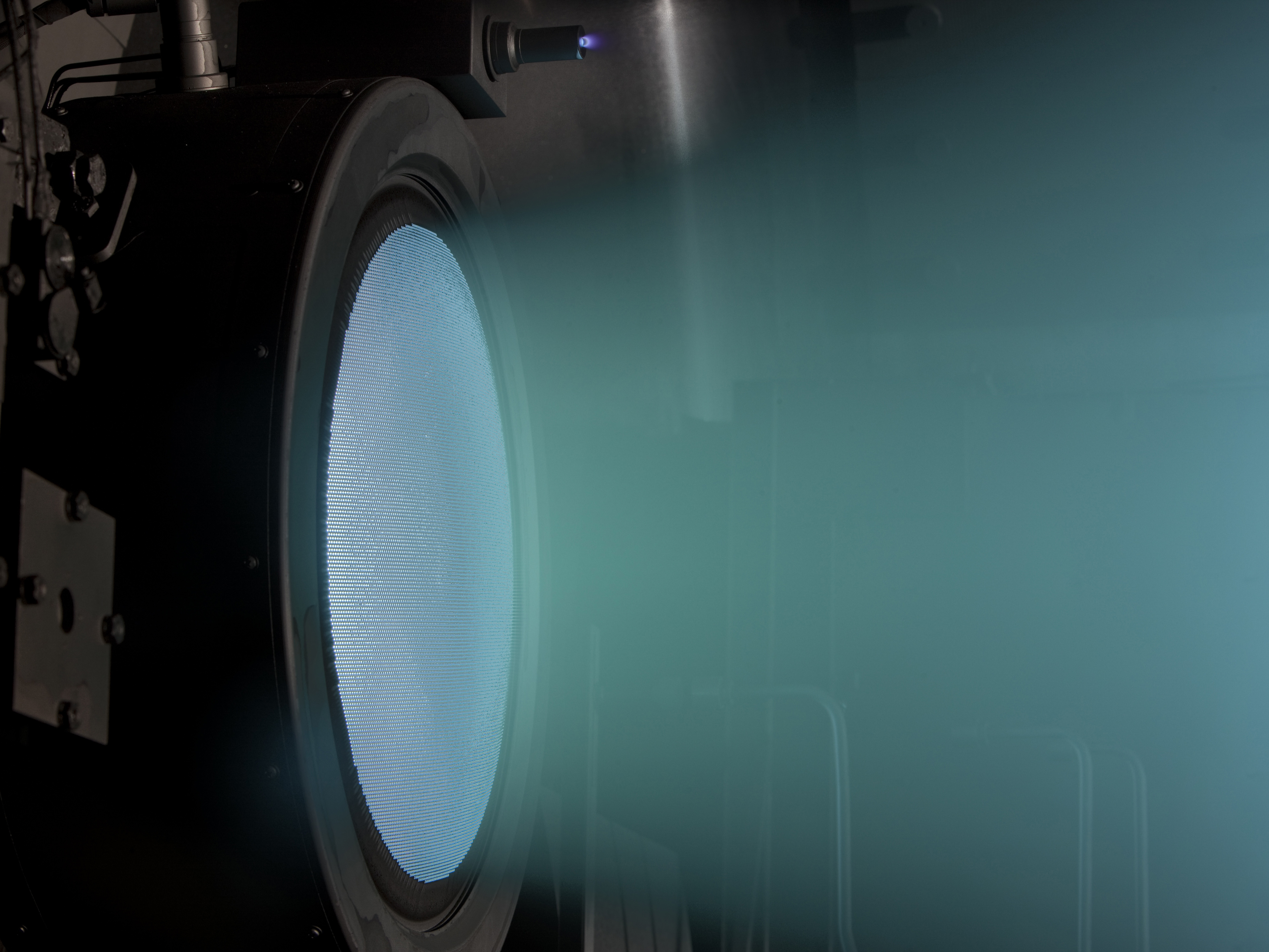NASA's Innovative Ion Space Thruster Sets Endurance World Record

A five-year test of NASA's latest ion drive for future spacecraft has set a new world record for the longest single space engine test.
The space agency's Evolutionary Xenon Thruster (NEXT) project completed a continuous test the ion engine for more than 48,000 hours — over five and a half years — longer than any other space propulsion system ever tested. With low fuel weight and long-running efficiency, ion engines have become strong contenders for deep space missions.
Spacecraft traveling through miles of space require energy to keep moving. Ion propulsion engines can help to minimize the bulkiness of fuel, allowing for increased scientific exploration in smaller packages. Over the course of nearly six years, NEXT consumed only 1,900 pounds (860 kilograms) of fuel, compared to the 22,000 pounds (10,000 kg) a conventional rocket would burn to create the same momentum. [Watch a video of NASA's Evolutionary Xenon Thruster in action]
Part of a class of solar electric propulsion (SEP) engines, NEXT bombards xenon with electrons, ionizing it. The ionized propellant is then focused out the back of the engine, creating a stream of ion jets known as an ion beam. The movement creates the thrust that moves the craft.
Ion engines win out over traditional engines much like the tortoise defeated the hare. Though it takes more time to speed up, it is able to run longer than its competition. Charged particles from NEXT reached speeds of up to 90,000 miles per hour (144,841 km/h), making it ideal for deep space missions in particular.
"SEP uses electricity, generated by solar panels, to power an electric thruster to propel spacecraft," principle investigator Michael Patterson of NASA's Glenn Research Center said in a statement. "Because it reduces the amount of propellant needed for a given mission, it greatly reduces the weight of the vehicle."
Less weight means less traditional propellant required to launch the craft into space — or more room for science. Ion engines on NASA's Dawn mission, which traveled to the asteroid Vesta and is now headed toward the dwarf planet Ceres, enabled its team to include more scientific equipment than they would have managed on a traditionally-powered craft.
Get the Space.com Newsletter
Breaking space news, the latest updates on rocket launches, skywatching events and more!
Once the staple of science fiction, ion propulsion engines have made a slow influx in military, commercial, and civilian space programs. An ion engine propelled NASA's Deep Space 1 mission, launched in October 1998, demonstrating the engine's long duration.
"The bottom line in space is to maximize the payload we deliver including potential missions in support of human operations and scientific payload," Patterson said. "We don't want to spend all our resources pushing propellant around. NEXT can fly huge payloads deep into space with super fuel efficiency."
Follow SPACE.com @Spacedotcom, Facebookand Google+. Original article on SPACE.com.
Join our Space Forums to keep talking space on the latest missions, night sky and more! And if you have a news tip, correction or comment, let us know at: community@space.com.

Nola Taylor Tillman is a contributing writer for Space.com. She loves all things space and astronomy-related, and enjoys the opportunity to learn more. She has a Bachelor’s degree in English and Astrophysics from Agnes Scott college and served as an intern at Sky & Telescope magazine. In her free time, she homeschools her four children. Follow her on Twitter at @NolaTRedd









